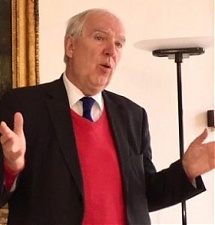Cooperation, Direct Speech, EU – Baltic States
International Internet Magazine. Baltic States news & analytics
Friday, 09.01.2026, 00:45
The step by step growth of cooperation between the Nordic and Baltic countries
 Print version
Print version |
|---|
The Norden Associations were created as national membership
organizations, with a large number of local groups. Considerable support was
given by private interests, as well as from leading officials in the
governmental and educational sectors. Networks were created between vocational
groups, schools, libraries and other cultural institutions. This can be
described as foreign policy from below.
Immediately following the war the states on the eastern side
of the Baltic Sea were struggling to secure their independence. Relative
stability was not achieved until the peace treaty in Dorpat (Tartu) in 1920. In
Finland a sister organization was created in 1924, PohjolaNorden. The
orientation of Finland towards the Nordic countries was not a foregone
conclusion, however. Foreign Minister Rudolf Holsti was forced to resign in
1922 following the refusal of the Finnish Parliament to ratify the so called
Warsaw Accord with Poland, Latvia and Estonia. It was not until the fifth of
December 1935 that the Finnish Parliament proclaimed its orientation toward the
Nordic countries, a short while after the Swedish Defence Commission, a forum
for consultation between the Swedish Government and Parliament, announced
strenghtened efforts in the area of defence.
The interest for the three newly independent Baltic states
remained limited. When Estonian politicans requested support from Stockholm
they were not met with a positive response.
The interest for the three newly independent Baltic states
remained limited. When Estonian politicans requested support from Stockholm
they were not met with a positive response.
The increased cooperation between Nordic states, with the
formation of the Nordic Council in 1952 as a notable example, is to a large
degree the result of the Cold War. Norway, Denmark and Iceland opted for NATO
membership. Sweden officially considered itself a neutral and non-aligned
country, while Finland sought to conduct a policy of neutrality while adhering
to the Finno-Soviet Treaty of 1948. The Nordic Council became an important
factor in the strenghtening of the ties between the countries.
Estonia, Lithuania and Latvia lost their independence during
the Second World War, and were occupied by the Soviet Union. Falling behind the
Iron Curtain, Poland effectively lost its ability to conduct an independent
foreign policy.
Cooperation between the Nordic countries deepened during the
remaining years of the Soviet Union. But already before its dissolvement, the
Nordic countries had taken initiatives to prepare for closer cooperation with
Estonia, Latvia and Lithuania. Nordic information offices could be established
preceding the regaining of independence in the three states. The Nordic
Council, under the lead of influential politicians such as the former Danish
Prime Minister Anker Jørgensen, and
former Swedish foreign minister Karin
Söder, were able to visit the Baltic states before the collapse of the
USSR, and assure them of their support.
The question of inclusion of the three Baltic states into
the Nordic Council was discussed in the early 1990s, but did not win support.
The cooperation has in fact deepened, however, both between the three Baltic
states, and between them and the Nordic countries. A rather comprehensive
platform of cooperation has been established between the Nordic and Baltic
states under the so called Nordic-Baltic Eight (NB8) format.
In 1992 the Nordic Investment Bank instituted the Baltic
Investment Programme. In the middle of the 1990s a special loan facility was
created for investment in environmental projects. Estonia, Latvia and Lithuania
became full members of the bank in 2005.
The educational
exchange programme of the Nordic Council of Ministers, Nordplus, also includes
the three Baltic states. As a Swedish ambassador to Estonia, I noticed how
actors in the country increasingly took part in institutions belonging to the
Nordic Council of Ministers, for example the research collaboration project
NordForsk. In 2018 Estonia applied for full membership in one of the premier
Nordic cooperation institutions, Nordisk Film & TV Fond.
The latter is the result of a prioritization by the Swedish
chairmanship of the Nordic Council of Ministers, in trying to gauge the further
interest of increased participation in Nordic projects and institutions. In a
short term perspective, Estonia’s application for membership in Nordisk Film
& TV Fond is a clear outcome of this attempt.
One area that could increase the possiblity of further
integration between the Nordic and Baltic countries is the creation of a
digital Nordic-Baltic citizenship. If a citizen in one country is able to get
their citizenship services online, this would offer citizens in the other
Nordic-Baltic states the same possibility in that other country.
At the meeting of the Nordic Council recently the Swedish
Prime Minister Stefan Löfven
suggested that the Nordic-Baltic region should strive to become world leaders
in the introduction of 5G technology. It is by such practical work that the
Nordic and Baltic countries can be brought closer together, step by step.








 «The Baltic Course» Is Sold and Stays in Business!
«The Baltic Course» Is Sold and Stays in Business!

